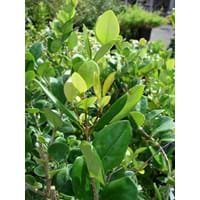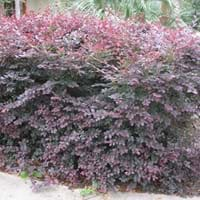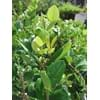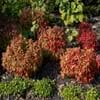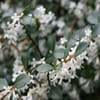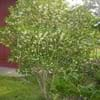Life Span
Annual
Perennial
Type
Broadleaf Evergreen
Broadleaf Evergreen
Origin
Eastern Asia
China, Japan
Types
Not Available
Little Rose Dawn, Hines Purpleleaf, ‘Shang-hi
Habitat
foothill woods, Hills, Lowland
gardens, Hillside, open Woodlands, Roadsides, Rocky areas, Stream side, Woodlands
USDA Hardiness Zone
7-10
6-9
AHS Heat Zone
Not Available
Not Available
Habit
Upright/Erect
Oval or Rounded
Flower Color Modifier
Bicolor
Bicolor
Fruit Color
Green, Black
Brown
Leaf Color in Spring
Dark Green
Green, Bronze
Leaf Color in Summer
Dark Green
Green
Leaf Color in Fall
Dark Green
Green
Leaf Color in Winter
Dark Green
Green
Leaf Shape
Acicular
Ovate
Plant Season
Spring, Summer, Fall, Winter
Spring, Summer, Fall, Winter
Sunlight
Full Sun, Partial Sun, Partial shade
Full Sun, Partial Sun, Partial shade
Type of Soil
Loam, Sand
Loam
The pH of Soil
Acidic, Neutral, Alkaline
Acidic, Neutral
Soil Drainage
Average
Average
Bloom Time
Late Spring, Early Summer, Summer
Early Spring, Late Winter
Tolerances
Drought, Salt
Drought
Where to Plant?
Ground
Container, Ground
How to Plant?
Rooted stem cutting, Stem Cutting, stem tip cuttings
Seedlings, Transplanting
Plant Maintenance
Medium
Low
Watering Requirements
Average Water Needs, Do not water frequently
Do Not over Water
In Summer
Lots of watering
Lots of watering
In Spring
Moderate
Consistently
In Winter
Average Water
Ample Water
Soil pH
Acidic, Neutral, Alkaline
Acidic, Neutral
Soil Type
Loam, Sand
Loam
Soil Drainage Capacity
Average
Average
Sun Exposure
Full Sun, Partial Sun, Partial shade
Full Sun, Partial Sun, Partial shade
Pruning
Remove damaged leaves, Remove dead branches, Remove dead leaves
Prune to control growth
Fertilizers
All-Purpose Liquid Fertilizer, Apply N-P-K, fertilize in growing season
All-Purpose Liquid Fertilizer, Fertilize three times a year
Pests and Diseases
Aphids, Bacterial leaf spot, Galls, Honey fungus, Red blotch, Wasps
Bacterial Gall
Plant Tolerance
Drought, Full Sun, Shade areas, Variety of soil types
Drought
Flower Petal Number
Single
Single
Foliage Texture
Medium
Medium
Foliage Sheen
Glossy
Matte
Attracts
Aphids
Not Available
Allergy
Not Available
Not Available
Aesthetic Uses
Borders, Not Used For Aesthetic Purpose
Showy Purposes
Beauty Benefits
Not Available
Not Available
Environmental Uses
Air purification
Not Available
Medicinal Uses
Antibacterial, Hypotensive, Tonic
No Medicinal Use
Part of Plant Used
Leaves
Whole plant
Other Uses
Used as an ingredient in coffee
Used as Ornamental plant
Used As Indoor Plant
No
No
Used As Outdoor Plant
Yes
Yes
Garden Design
Container, Foundation, Hedges, Mixed Border, Screening, Wind Break, Topiary, Bonsai, Espalier
Container, Feature Plant, Foundation, Hedges, Mixed Border, Screening, Wind Break
Botanical Name
LIGUSTRUM japonicum
LOROPETALUM chinense
Common Name
Japanese Ligustrum
Waxleaf Ligustrum
Texas Privet
Waxleaf Privet
Loropetalum, Chinese fringe flower
In Hindi
Japanese Privet
Loropetalum
In German
japanische Privet
Loropetalum
In French
Privet japonaise
Loropetalum
In Spanish
Privet japonesa
Loropetalum
In Greek
Ιαπωνικά Privet
Loropetalum
In Portuguese
Privet Xapanese
Loropetalum
In Polish
Xapanese Privet
Loropetalum
In Latin
Japanese Privet
Loropetalum
Phylum
Tracheophyta
Spermatophyta
Class
Magnoliopsida
Dicotyledonae
Order
Lamiales
Saxifragales
Family
Oleaceae
Hamamelidaceae
Genus
Ligustrum
Loropetalum
Clade
Angiosperms, Asterids, Eudicots
Angiosperms, Core eudicots, Eudicots
Tribe
Not Available
Not Available
Subfamily
Not Available
Not Available
Number of Species
Not Available
Season and Care of Japanese Privet and Loropetalum Chinese
Season and care of Japanese Privet and Loropetalum Chinese is important to know. While considering everything about Japanese Privet and Loropetalum Chinese Care, growing season is an essential factor. Japanese Privet season is Spring, Summer, Fall and Winter and Loropetalum Chinese season is Spring, Summer, Fall and Winter. The type of soil for Japanese Privet is Loam, Sand and for Loropetalum Chinese is Loam while the PH of soil for Japanese Privet is Acidic, Neutral, Alkaline and for Loropetalum Chinese is Acidic, Neutral.
Japanese Privet and Loropetalum Chinese Physical Information
Japanese Privet and Loropetalum Chinese physical information is very important for comparison. Japanese Privet height is 150.00 cm and width 120.00 cm whereas Loropetalum Chinese height is 180.00 cm and width 180.00 cm. The color specification of Japanese Privet and Loropetalum Chinese are as follows:
Japanese Privet flower color: White
Japanese Privet leaf color: Dark Green
Loropetalum Chinese flower color: White
- Loropetalum Chinese leaf color: Green and Bronze
Care of Japanese Privet and Loropetalum Chinese
Care of Japanese Privet and Loropetalum Chinese include pruning, fertilizers, watering etc. Japanese Privet pruning is done Remove damaged leaves, Remove dead branches and Remove dead leaves and Loropetalum Chinese pruning is done Prune to control growth. In summer Japanese Privet needs Lots of watering and in winter, it needs Average Water. Whereas, in summer Loropetalum Chinese needs Lots of watering and in winter, it needs Ample Water.
